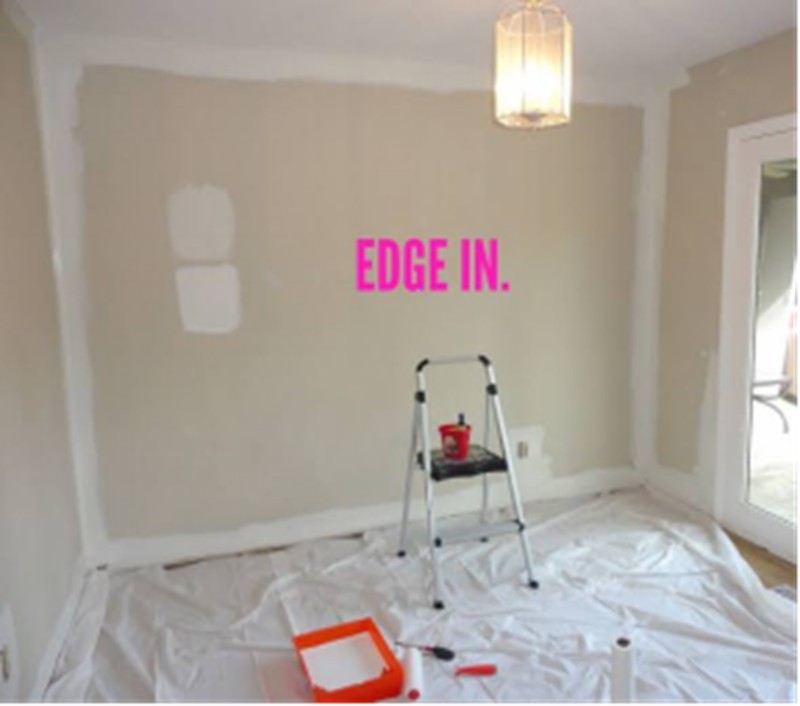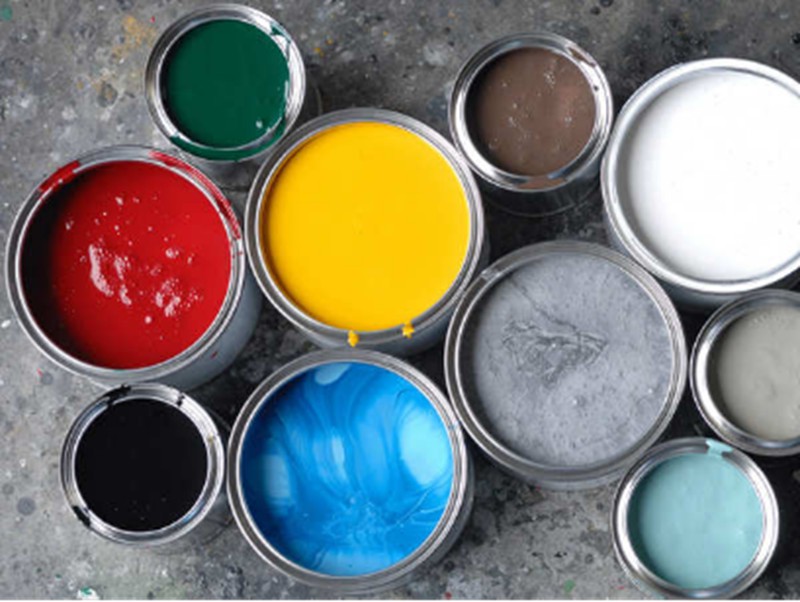When planning to paint a room, one of the first questions you should ask is, “how long does it take to paint a room?” You can only make effective plans if you know how much time will be devoted to a painting project.
The time it takes to paint a room is a significant factor in how you do it, especially if you’re a beginner. Several factors influence how long it takes to paint a room.
You need to consider the size of the room, the type of paint and tools used, the number of recoating, the amount of detail you want in the room’s design, and your painting ability. The smaller the space, the less time it takes; the more skilled you are, the faster you will work.
Because no two rooms are the same, one size does not fit all. However, there are standards and estimates for how long each painting process should take.
To give you an idea, we will describe the painting process of a standard room and the time each takes. Continue reading to learn more!

Table of Contents
The Painting Process: How Long it Takes
The actual painting of a room does not take all day, whether it’s a bedroom or bathroom. However, when you factor in the time it takes for paint to dry between recoats, you’re looking at 1 – 2 days, depending on the paint.
Knowing the outline of how the paint job should progress will help you plan better. You might end up spending a little more or less time. The painting process is as follows:
- Setting up the room
- Create an outline with tape
- Painting: cutting-in
- Painting: walls, ceiling, and trims
- Touch up
- Remove tape and clean up
Organising the Room (1 to 2 hours)
To begin painting a room, you must prepare it for the project. This entails removing all obstacles in the room. Do not skip this step because it will result in a poor paint job and take longer to paint your room if you are trying to maneuver around items at intervals.
Moving Furniture
You should move your furniture away from the walls and toward the center of the room. Cover them and the surrounding floor with a cloth (old bedsheet, drop cloth, etc.) to prevent paint splatter.
Doing this can take some time, depending on how much furniture you have and whether they’re a hassle to move around.
Remove Wall Fixtures
Take down anything that can be hung on the walls or from the ceiling. Remove the light switch, outlet covers, vent covers, curtains, and wallpaper. Screws and other easy-to-lose items can be stored in a ziplock bag.
Clean the Area
Clean walls, baseboards, ceiling, and woodwork with detergent and warm water. Use a damp rag in a soft circular motion to remove dust and help the paint adhere better to the walls.
This can be done simultaneously as you move your things around or after you’re finished.
Patchwork
Walk around the room to check for dents, holes, scratches and other imperfections. Nail holes you no longer need and other imperfections can be filled with a putty knife and sparkle. Sand the wall smooth, dust off with a rag, and add primer to those patches for a professional finish.
Make an Outline With Tape (30 minutes)

Painter’s tape helps you create clean lines, especially if you’re not an expert painter who only needs a good brush to achieve that.
Tape off the section you want to paint, like the trim and ceiling, for when you’re painting the wall or along the edges for when you’re painting the trim and ceiling.
Run a damp rag or putty knife on the tapes, so they adhere tightly to the walls. Depending on the manufacturer’s instructions, allow 30 minutes for the paint to dry.
Painting: Cutting-In (1 hour)

Since cutting in is a great way to save time later and roll on paint, it is an additional step. This is the process of carefully painting straight lines around the edges of walls with a 2 or 4-inch angled brush. You’ll cut in around wall fixtures, window frames, door frames, trim, and tight corners.
Cut-in Paint Throughout Room
Cutting in requires a steady hand as the brush meets the corner. Repaint the area to ensure a smooth, flat surface free of brush marks.
Go up a ladder to do the same for the ceiling line, then come down on your sides along the baseboards. You can experiment with various paint colors.
Clean Your Brush
Cleaning brushes after use can take up to 5 minutes, which helps protect the brush if done immediately. You can use warm water and soap to clean your brushes for latex paint.
Painting: Walls, Ceiling, and Trims (2 – 3 hours)
The painting of the room takes the longest time but is relatively the least stressful part of the job. Since you have done the ‘cut-ins’ and the space is ample and open, you can paint on without bothering about precision.
Paint Walls
The right equipment can make the entire process a breeze. So we recommend a 14 – 18 inch roller for the walls, and an extension rod will help you paint the high walls and ceiling.
A roller tray will also come in handy when painting. Paint the walls in a steady floor-to-ceiling motion, going once and overlapping the next.
Paint Ceiling, Trim, and Baseboard
Use a 9-inch roller for the ceiling and paint in small sections, overlapping the paint strokes. For the trim and baseboard, use a 4-inch roller, and you can apply a fairly heavy coat to avoid recoating.
Allow to Dry
Avoid recoating for a while, regardless of how uneven the paint appears. Allow the paint to dry for the recommended amount of time before applying another coat, which can be about 4 hours.
Touch Up (10 minutes)
This simple step employs a small brush to remove the more visible roller marks. You then use your roller to blend them for a smoother look.
Remove Tape and Clean Up (30 – 60 minutes)
After the last coat of paint is partially dry, gently and slowly pull off the painter’s tape at a 45-degree angle. Remove any stray paint from the floor coverings and surfaces. Wash your rollers in warm water. Cover the paint cans, properly seal them, and store them.
Avoid arranging your belongings around the room for a few days to allow the room to dry out. Remove any trash that accumulated while working. Cleaning can take place after each coating before the final one.
Other Factors Influencing a Room’s Painting Time
Various factors add or subtract time from the painting project, and each individual’s conditions might differ. The time spent varies depending on the tool used, the number of people painting the room, and other extenuating circumstances.
Size of the Area to be Painted
The larger the room, the longer it will take because it has a larger surface area. There’s also the question of whether you’re painting the entire room or just a portion. Whether you’re simply retouching paint or starting from scratch, you’ll need to scrape off the old paint.
If you’re painting the wall and not the ceiling or trims, it’d also reduce the time spent. Including woodwork such as doors and windows in the paint job can add up to 3 hours.
Number of Paint Colours
Using the same color for the walls, ceiling, trim, doors, and any other surfaces you’re painting will also save time. You don’t have to switch brushes and paint every time you finish a section.
It will take even longer if the room requires more than one color and has designs on the walls. For design purposes, you may need to tape the walls in the desired shape before painting them, which can take some time.
Type of Paint

Different paints have different drying times. A latex-based, low-VOC paint will dry faster than others, allowing you to apply a second coat sooner. However, oil-based paints require you to wait longer before reapplying paint. When organizing a paint day, this is a critical factor to consider.
Number of Coats Required
The time between coats is the most time-consuming step in this entire process, and the number of times you take this break will prolong the project even more. One coat will suffice for retouching, but you will require at least two coats for repainting.
The first coat takes the longest, while the second may take 15 minutes less because the more challenging work has already been done.
A primer can be applied before painting for a professional look and also needs time to dry out. After the final coat of paint has dried, you can apply the sealant.
Preparation
Depending on the state of the room, preparing it for painting can take some time. If you have a lot of things in the room, moving them may take longer than painting. It can be pretty strenuous and require you to rest before continuing.
The condition of the room can also have an impact on the time, either positively or negatively. If the walls are in poor condition, you will need more time to fill, sand, and clean them before painting.
Smoother walls are faster and easier to paint. The same holds for the ceiling. If it’s falling apart, you must repair it before painting.
Another critical factor to consider when planning your project is the environmental condition. Painting in the summer or humid weather takes longer to dry than painting in the winter.
Tools and Materials
The better tools are designed to do a better job in less time. You can’t expect to paint an entire room with a 4-inch angled brush. It’s an excellent tool, but it has its functions and isn’t appropriate for the whole room.
If you use a ladder instead of a flat bench to paint the higher sections of the walls and ceiling, you will need to get down and move the ladder from one spot to another. This will undoubtedly consume your time. Another example is sanding by hand rather than with an electronic sander.
The quality of the tools you use is also essential. Invest in a high-quality brush to avoid paint adhering to the bristles or the handle dislodging. This helps to save time that low-quality tools would otherwise waste.
The quality of the paint is also important. You want to use a grade of paint that will roll on smoothly and not clump up quickly.
Number of Helping Hands and Skill Level
Two painters in a room will achieve the same results as one person in half the time. Moving things around, outlining, and painting will be a breeze compared to when one person does all the work.
An experienced painter or contractor will work faster than two novices. The professional painter knows what and when to do it and works precisely and skillfully. As a result, these factors significantly impact the time it takes to paint a room.
Frequently Asked Questions
Do You Paint the Trim or the Wall First?
Paint the ceiling before you, the doors/windows, the trims and finally, the walls after cutting them in.
How Many Coats Do You Need for a Ceiling?
You can coat as many times as you want. Ensure the first one is done properly, with no sanding, to avoid a rough finish that adding more paint can worsen.
Can You Spray-paint Your Room’s Walls?
Yes, you can. It is a more efficient method of completing the task. However, this is better suited for exterior walls because it can be messy if improperly handled.
Final Words
Painting a room won’t take all day, even with drying times, and it’s reasonably quick. If you have a plan and are prepared, it should only take 5 to 7 hours.
A beautiful space has countless advantages, making this project worthwhile in terms of time and resources. If you have any questions concerning painting a room, kindly leave them in the comment section below.













